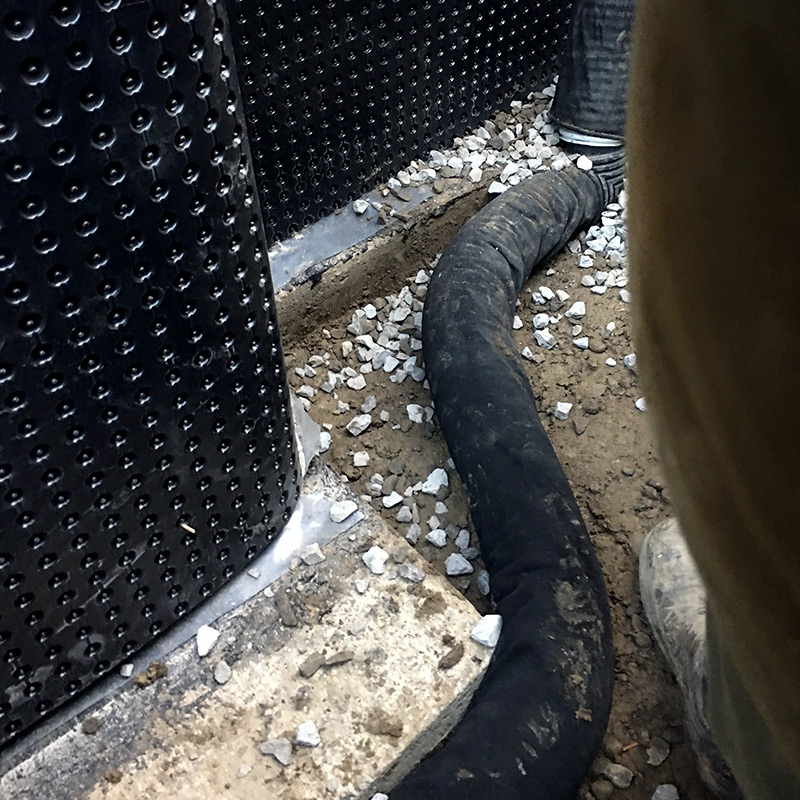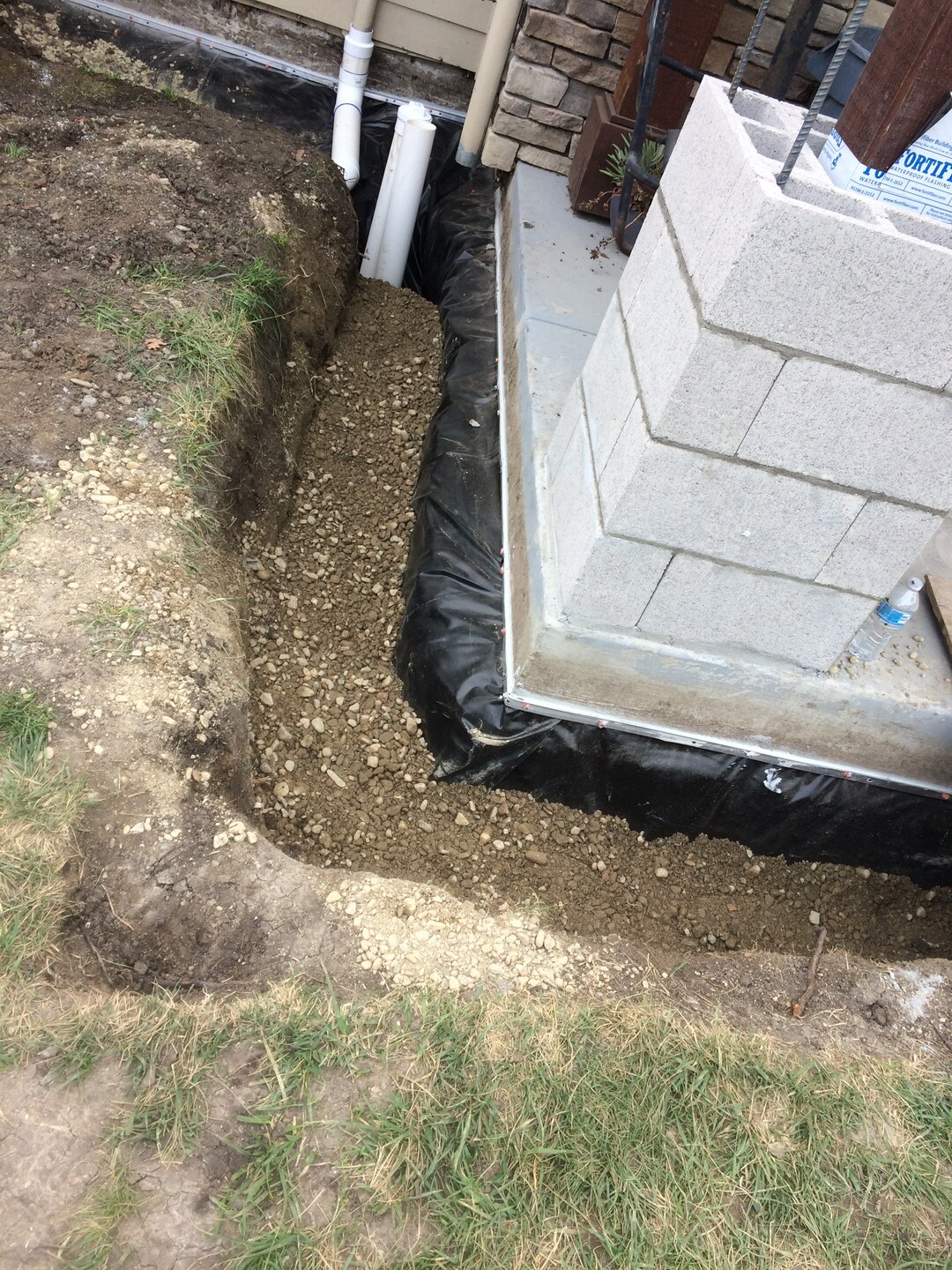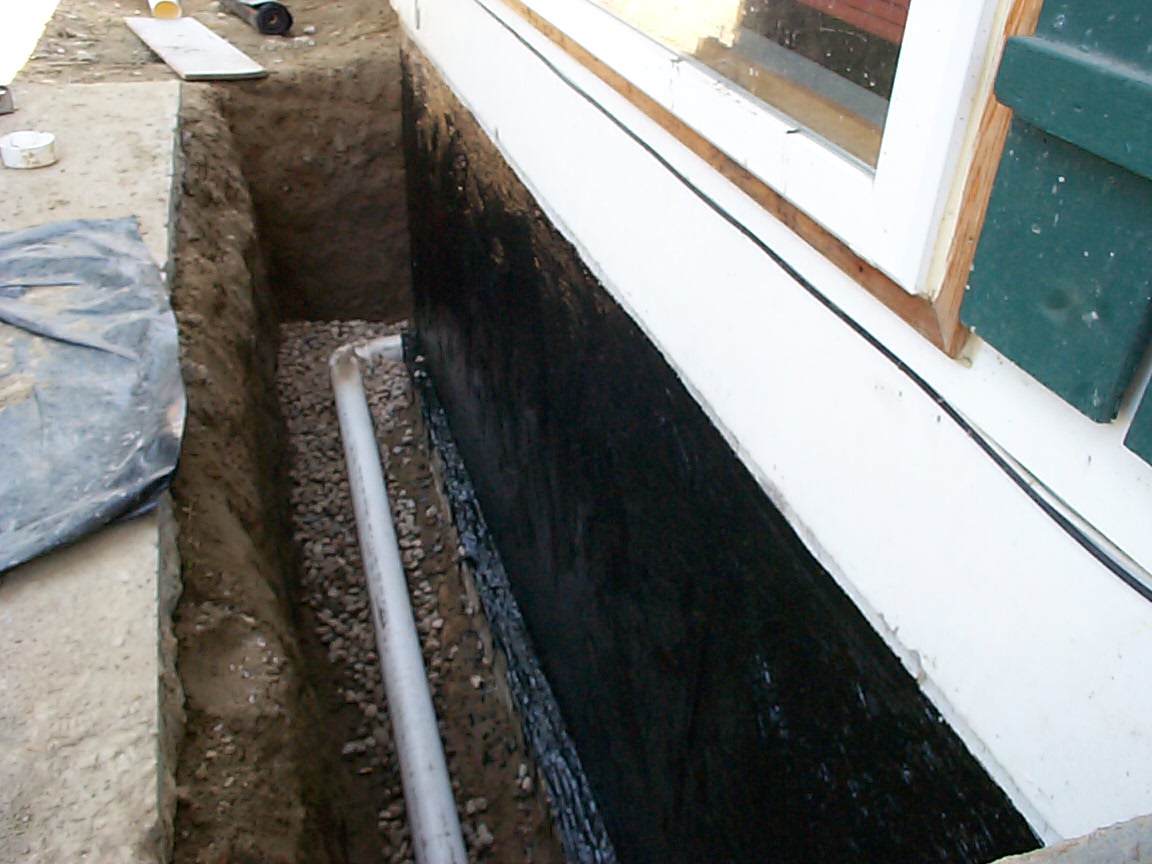Footing Drain Servicesin Marine City MI
Footing Drains to Ensure Solid and Dry Foundations
We Are Locally Owned & Operated For Over 37 Years
Contact Us Today!
We Serve Businesses In And Around The Following Cities:
About Footing Drain Services
Introduction to Footing Drain
The foundation of stable commercial properties starts deep beneath the surface. These unseen aspects, especially the essential component known as the footing drain, play a crucial role in the longevity and stability of your commercial spaces. A footing drain is an essential and intelligent inclusion in the construction process, particularly in a marine climate where buildings are naturally exposed to a high level of ground moisture.
Marine City, rich in entrepreneurial growth and development, has an intricate web of commercial properties that stand as a testament to sound construction practices, with the footing drain being a crucial aspect. So, what is a footing drain, and why should it form part of your property development or renovation project? Let’s delve into the details.
Understanding Footing Drains
Essentially, a footing drain refers to a system designed to divert water away from the foundation of your property, thereby helping to maintain its structural integrity. A professionally installed footing drain reduces the risk of water-related issues, such as foundation cracking, damp and mold. The system typically includes an exterior footing drain installed around the perimeter of the property, working hand in hand with a foundation footing drain system underneath the property.
However, if not installed correctly, from excavation to completion, this drainage system can lead to severe implications for the property. Hence, commercial property owners in Marine City have consistently trusted D&J Contracting, known for their solid expertise and practical insight, to deliver high-quality footing drain solutions to ensure their investments are well-protected against any potential water damage.
Benefits of a Footing Drain System
The benefits of a robust footing drain system cannot be overstated. One of the primary advantages is the prevention of water seepage into basements – an all too common problem that results from ineffective footing drains in basements. It’s also worth noting that through accurate footing drain excavation and assembly, you can prevent structural damage that can lead to expensive repairs or, in the worst-case scenario, the demise of your commercial property.
The maintenance and potential repair or replacement of these draining systems is also crucial. Regular check-ups ensure that the system is operating at its maximum efficiency, thereby, ensuring longevity. In the rare instances when a footing drain repair or footing drain replacement is essential, professionals like those at D&J Contracting bring their expert skills for a seamless reintroduction of an efficient drainage system.
Real-world Applications and Examples
In the picturesque city of Marine City, where commercial spaces often sit close to the water’s edge, the importance of a strong foundation footing drain system cannot be overstated. Retail centers, office complexes, restaurants, all benefit from well-installed footing drain systems, saving the property owners the unnecessary expense and stress associated with water-related damages.
One case in point was a waterside restaurant in Marine City that experienced rising damp issues due to an ineffectively installed footing drain. After a footing drain repair from the experts at D&J Contracting, the problem was quickly resolved, and the restaurant continued its operation hassle-free.
Similarly, a commercial center in the city was at one point plagued by severe structural issues because of an inadequate footing drain. A comprehensive footing drain replacement was carried out by D&J Contracting, providing a newfound strength to the building foundation and peace of mind to the property owners. It’s these real-world applications that illustrate the vital role of footing drains in the upkeep of your commercial properties.
Ensuring the Longevity of Your Investment
Whether you are planning a new commercial project or aiming to maintain an existing one in the charming city of Marine City, the importance of a well-designed footing drain should not be overlooked. It’s not just about preventing basement flooding or structural damage but ensuring that your investment stands tall, impervious to the elements. Remember, the cost of installing or repairing your footing drain system is always less than the potential costs of neglecting this key aspect of property development and maintenance.
Forium City businesses, for years now, have been trusting D&J Contracting for professional, reliable, and effective footing drain solutions. So, whether you’re exploring potential improvements in your exterior footing drain or looking for expert advice on your existing footing drains in your basement, consider experts at D&J Contracting as your knowledgeable partner throughout this journey.
In conclusion, taking the time to understand, install, and maintain your footing drain system is an investment in the future of your commercial property. It may not make the headlines, but its role is fundamental to your lasting success in Marine City’s commercial property landscape.
Footing Drain Services Gallery


Call Us Today to receive your Free Quote for
Footing Drain in Marine City
Serving: Marine City, Michigan

About Marine City, Michigan
The area of Marine City had been Ojibwa territory for centuries before the first European contact. Beginning in the 17th century, French trappers and missionaries entered the territory, followed by settlers in the colonial period on both sides of the Detroit and St. Clair rivers. Farmers developed long, narrow plots that were laid out in the typical rectangular shape of colonial French, with the narrow end along the riverfront. The first Catholic Church was built by French Catholics at Catholic Point, where they had bought land before the United States was formed. French Canadians also lived on the other side of the river in a small farming community known as Petite Côte.
It was not until after the American Revolution that European-American settlers arrived in any number. In the 1780s they obtained a deed for land from the Chippewa Indians. The Americans began to call the community “Yankee Point”, because so many settlers came from the Northern Tier of states, with late 18th and 19th-century westward migration originating from New England and New York. They also called the settlement “Belle River” (Belle Riviere in French), as the French had; this later was applied as the name of a neighborhood.
The village was platted by Americans as Newport in 1835–37. Although never incorporated by that name, it was known as “Newport” for 31 years. In 1865, it was incorporated as the Village of Marine City. Thriving on lumber trade and shipbuilding, the village re-incorporated as a city in June 1887.
The second half of the 19th century was the period of great growth in the village, with many workers employed in the lumber and shipping industries. Rafts of lumber were moved down the St. Clair River in the spring to be worked at Marine City or Detroit. Shipyards built some of the many wooden ships that crossed the Great Lakes. Lake steamers linked passengers with small towns around the lakes. Their decks were full and their flags were flying. Marine City was centered on a park by the St. Clair River, where bands played in the bandstand at City Hall during the summer.
As the lumber business ran down with the exploitation of forests, the area became linked to other resource extraction. Freighters carried iron from Duluth, Minnesota, which had been mined in the Mesabi Range, to Ashtabula, Ohio for steel processing. They passed from Lake Superior through Lake Huron and to Lake Erie. Marine City was known as the town on the St. Clair River where the captains of lake freighters lived. Many of these men and their crews worked for the Pittsburgh Steamship Company. Formed in 1901 by US Steel Corporation, it became the largest commercial fleet on the Great Lakes.
In the 21st century, Marine City has become the home of ten antique stores. The Snug Theater is a 98-seat theater featuring live performances. It will be joined in 2014/15 by a sister theater, The Riverbank Theater, in a former bank building (originally Marine Bank & Trust) down the street. Also joining the two acting theaters is the old Mariner Theatre, which serves as a special event center, movie theater, gallery for fine art Models, and site of the builders model for the ocean-going Titanic. Restaurants and retail in downtown also cater to visitors and residents.
The Heather House, now operated as a bed and breakfast, was built in the Queen Anne Victorian-style. It was completed in 1885 after 2 years of construction for its owner, William Sauber. He was chief engineer for the Mitchell fleet of Great Lake steamers.
- According to the United States Census Bureau, the city has a total area of 2.46 square miles (6.37 km), of which 2.15 square miles (5.57 km) is land and 0.31 square miles (0.80 km) is water.
- It is considered to be part of the Thumb of Michigan, which in turn is a subregion of the Flint/Tri-Cities.
- Marine City can also be considered as in the Blue Water Area, a subregion of the Thumb.
- It is part of the Detroit-Warren-Livonia Metropolitan Statistical Area (MSA) and the Detroit-Ann Arbor-Flint Combined Statistical Area (CSA).
| Census | Pop. | Note | %± |
|---|---|---|---|
| 1870 | 1,240 | — | |
| 1880 | 1,673 | 34.9% | |
| 1890 | 3,268 | 95.3% | |
| 1900 | 3,829 | 17.2% | |
| 1910 | 3,770 | −1.5% | |
| 1920 | 3,731 | −1.0% | |
| 1930 | 3,462 | −7.2% | |
| 1940 | 3,633 | 4.9% | |
| 1950 | 4,270 | 17.5% | |
| 1960 | 4,404 | 3.1% | |
| 1970 | 4,567 | 3.7% | |
| 1980 | 4,414 | −3.4% | |
| 1990 | 4,556 | 3.2% | |
| 2000 | 4,652 | 2.1% | |
| 2010 | 4,248 | −8.7% | |
| 2020 | 4,079 | −4.0% | |
| U.S. Decennial Census | |||
As of the census of 2010, there were 4,248 people, 1,765 households, and 1,117 families residing in the city. The population density was 1,975.8 inhabitants per square mile (762.9/km). There were 2,015 housing units at an average density of 937.2 per square mile (361.9/km). The racial makeup of the city was 96.8% White, 0.3% African American, 0.7% Native American, 0.2% Asian, 0.5% from other races, and 1.6% from two or more races. Hispanic or Latino of any race were 1.7% of the population.
There were 1,765 households, of which 31.1% had children under the age of 18 living with them, 44.6% were married couples living together, 13.3% had a female householder with no husband present, 5.4% had a male householder with no wife present, and 36.7% were non-families. 31.3% of all households were made up of individuals, and 14% had someone living alone who was 65 years of age or older. The average household size was 2.41 and the average family size was 3.00.
The median age in the city was 40.2 years. 22.9% of residents were under the age of 18; 8.2% were between the ages of 18 and 24; 25.8% were from 25 to 44; 27.9% were from 45 to 64; and 15.3% were 65 years of age or older. The gender makeup of the city was 48.2% male and 51.8% female.
As of the census of 2000, there were 4,652 people, 1,860 households, and 1,212 families residing in the city. The population density was 2,120.8 inhabitants per square mile (818.8/km). There were 2,006 housing units at an average density of 914.5 per square mile (353.1/km). The racial makeup of the city was 97.29% White, 0.09% African American, 0.56% Native American, 0.26% Asian, 0.86% from other races, and 0.95% from two or more races. Hispanic or Latino of any race were 1.38% of the population.
There were 1,860 households, out of which 33.5% had children under the age of 18 living with them, 48.2% were married couples living together, 12.7% had a female householder with no husband present, and 34.8% were non-families. 30.8% of all households were made up of individuals, and 14.4% had someone living alone who was 65 years of age or older. The average household size was 2.50 and the average family size was 3.15.
In the city, the population was spread out, with 27.6% under the age of 18, 8.2% from 18 to 24, 30.5% from 25 to 44, 19.4% from 45 to 64, and 14.2% who were 65 years of age or older. The median age was 36 years. For every 100 females, there were 90.4 males. For every 100 females age 18 and over, there were 88.6 males.
The median income for a household in the city was $40,146, and the median income for a family was $47,308. Males had a median income of $39,228 versus $23,677 for females. The per capita income for the city was $19,722. About 7.6% of families and 8.9% of the population were below the poverty line, including 9.0% of those under age 18 and 16.1% of those age 65 or over.
Call Us Today to receive your Free Quote for
Footing Drain in Marine City
Related Services in Marine City, Michigan
We Serve Businesses In The Following Zip Codes:
48007, 48015, 48021, 48026, 48035, 48036, 48038, 48042, 48043, 48044, 48045, 48046, 48047, 48048, 48050, 48051, 48066, 48071, 48080, 48081, 48082, 48083, 48084, 48085, 48088, 48089, 48090, 48091, 48092, 48093, 48098, 48099, 48225, 48230, 48236, 48310, 48311, 48312, 48313, 48314, 48315, 48316, 48317, 48318, 48397